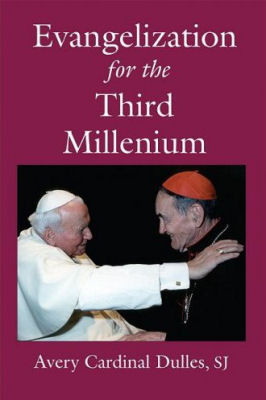
|
Posted November 16, 2009
Book: Evangelization for the Third Millennium Author: Avery Cardinal Dulles, SJ Paulist Press, NY. 2009. Pp. 129 An Excerpt from the Preface: Cardinal Dulles maintained that Pope Paul VI’s 1975 apostolic exhortation on evangelization, Evangelii nunciandi, was one of his greatest and more important contributions to the life of the Church in our time. It was his hope that the present book would play a role in revitalizing this subject, and for this reason he devoted the last days of his life to working on it. An Excerpt from the Book: Personal Witness
Referring back to Paul VI, John Paul II asserts that “People today put more trust in witnesses than in teachers, in experience than in teaching, and in life and action than in theories. The witness of a Christian life is the first and irreplaceable form of mission. The preeminent form of personal witness is martyrdom. Beginning with Stephen, whose stoning seems to have made a deep impression on Paul, the martyrs have provoked admiration and won many to the faith. But witness more often takes place in less dramatic ways. One thinks in this connection of St. Francis of Assisi, who is said to have told his companions: “Preach the gospel every day, and if necessary use words.” When he invited a friar to accompany him to preach in a neighboring village, the two of them walked to the village, passed through its streets, and returned without having addressed the people. The friar asked St. Francis, “When are we going to preach?” And St. Francis replied, “We have already done so by our appearance and demeanor.” “That was a more powerful sermon,” he added, “than if we had gone into the marketplace and harangued the people.” I recall some years ago reading a brief memorandum by Walker Percy on his conversion. He mentioned particularly the example of a college classmate who used to steal off quietly each morning before breakfast to attend Mass. The manifest devotion of this classmate was a kind of silent sermon, more effective perhaps than any spoken admonition. Table of Contents: 1. Evangelization: New Testament through Vatican II 2. Paul VI and Evangelization 3. The program: Paul VI, John Paul II and the New Evangelization 4. The gospel: point of contention and convergence 5. Evangelization and ecumenism 6. The evangelization of culture and the Catholic University 7. The New Evangelization and theological renewal 8. Models of evangelization 9. Models of catechesis 10. Models of apologetics |
|
